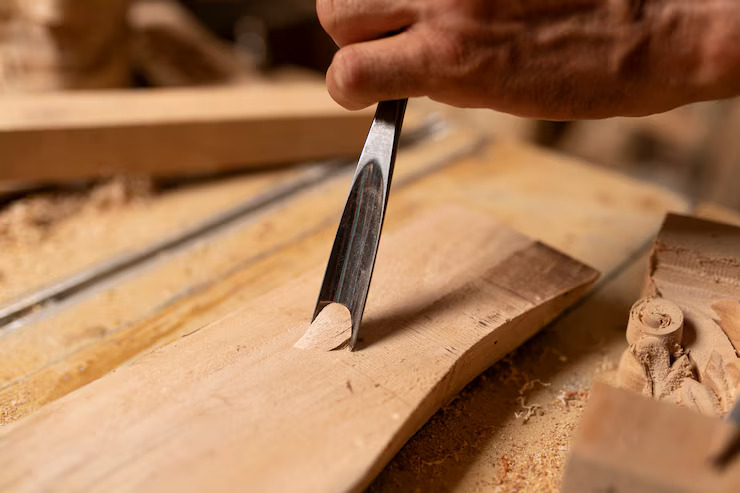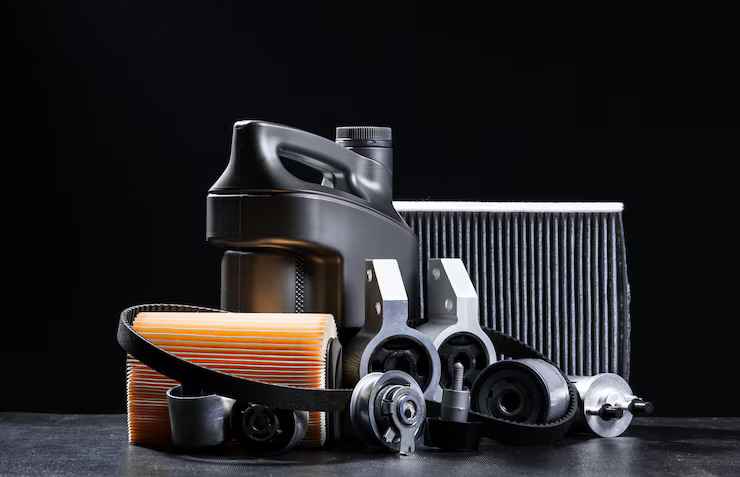A Beginner’s Guide to Chisels: Types, Uses, and Maintenance

Strong 8k brings an ultra-HD IPTV experience to your living room and your pocket.
Whether you’re stepping into the world of woodworking or metalworking, one tool that you’ll quickly become familiar with is the chisel. Despite its simple design, a chisel is incredibly versatile and essential in many types of craftsmanship. From carving fine furniture details to shaping metal parts, chisels are foundational tools across trades. If you're just getting started, understanding the types of chisels, how they are used, and how to maintain them properly can greatly improve both your skill and safety.
What is a Chisel?
A chisel is a hand tool with a sharp cutting edge on one end and a handle on the other. It’s used for cutting, carving, or shaping hard materials such as wood, metal, stone, or plastic. Chisels are often struck with a mallet or hammer, depending on the type of task and material. Choosing the right type of chiselensures precision and prevents tool damage or injury.
Types of Chisels
Chisels come in many variations designed for specific tasks. Here’s a breakdown of the common types used in woodworking and metalworking:
Woodworking Chisels
Bench Chisel: The most common chisel found in workshops. Used for general-purpose tasks like trimming, chopping, or smoothing joints.
Mortise Chisel: Thick, strong chisels designed for cutting deep, square holes (mortises) in wood. These withstand repeated hammer strikes.
Paring Chisel: Long and thin, ideal for delicate, fine work where precision is key. Typically used without a mallet.
Bevel Edge Chisel: These have angled edges for working in tight spaces such as dovetail joints. Great for fine joinery.
Carving Chisels: Come in various shapes (V-gouges, U-gouges, etc.) used in decorative or artistic wood carving.
Metalworking Chisels
Cold Chisel: Made of hardened steel, cold chisels are used for cutting metal without heating it. Ideal for cutting bolts, bars, and rivets.
Cape Chisel: Features a narrow blade used for cutting grooves and keyways in metal surfaces.
Diamond Point Chisel: Perfect for precise cuts in corners or tight spaces; the tip is shaped like a diamond.
Round Nose Chisel: Used to create rounded grooves or channels in metal. Often used in shaping or sculpting.
Common Uses of Chisels
Chisels are employed in both functional and artistic applications. Some typical uses include:
- Cutting and trimming wood or metal
- Cleaning out joints in carpentry or masonry
- Shaping, smoothing, or hollowing surfaces
- Sculpture and detailed carving
- Removing unwanted material in fabrication or repair
In carpentry, chisels are used to fine-tune joints or create recesses. In metalworking, they help in breaking apart old welds, cutting sheet metal, or shaping solid material.
Chisel Maintenance Tips
To get the best performance and longevity from your chisels, regular care is essential:
1. Sharpening
A dull chisel is not only ineffective but also dangerous. Keep the edge razor-sharp using a sharpening stone, honing guide, or grinder. For woodworking, a fine edge is crucial for clean cuts. For metal chisels, maintain a robust angle to withstand force.
2. Cleaning
After each use, clean your chisel with a dry cloth. Remove any residue or debris, especially from the blade edge.
3. Rust Prevention
Apply a light coat of oil (like machine oil or WD-40) to metal parts to prevent rust, especially if the tool is stored in a humid area.
4. Proper Storage
Avoid throwing chisels into a drawer or toolbox. Use a chisel roll, magnetic strip, or wall-mounted rack to protect the blade edge and your hands.
5. Use the Right Striking Tool
Don’t use a hammer on chisels meant for hand use only. Wood chisels often require a wooden or rubber mallet—both of which are specialized striking tools—to prevent damage to the handle and ensure precise cuts.
Beginner Tips for Using Chisels Safely
- Always cut away from your body and keep both hands behind the cutting edge.
- Clamp your workpiece securely before using a chisel.
- Start with a basic chisel set, and upgrade as your skills progress.
- Wear safety glasses to protect your eyes from flying debris.
- Practice control and technique on scrap material before working on your main project.
Conclusion
A chisel is more than just a sharp piece of metal—it's a gateway to creating precision work in both wood and metal. Whether you're crafting furniture, repairing hardware, or exploring DIY artistry, understanding chisel types, proper usage, and maintenance routines will give you confidence and efficiency in your work. As a beginner, investing in a few quality chisels and learning to care for them will go a long way toward building your craftsmanship foundation.
At JCBL Hand Tools, we are proud to be a global supplier and exporter of premium hand tools, including a wide range of striking tools such as hammers, chisels, and more. Whether you're looking to build your first toolkit or upgrade your professional workshop, we offer durable and reliable solutions designed for performance and precision.
Note: IndiBlogHub features both user-submitted and editorial content. We do not verify third-party contributions. Read our Disclaimer and Privacy Policyfor details.



